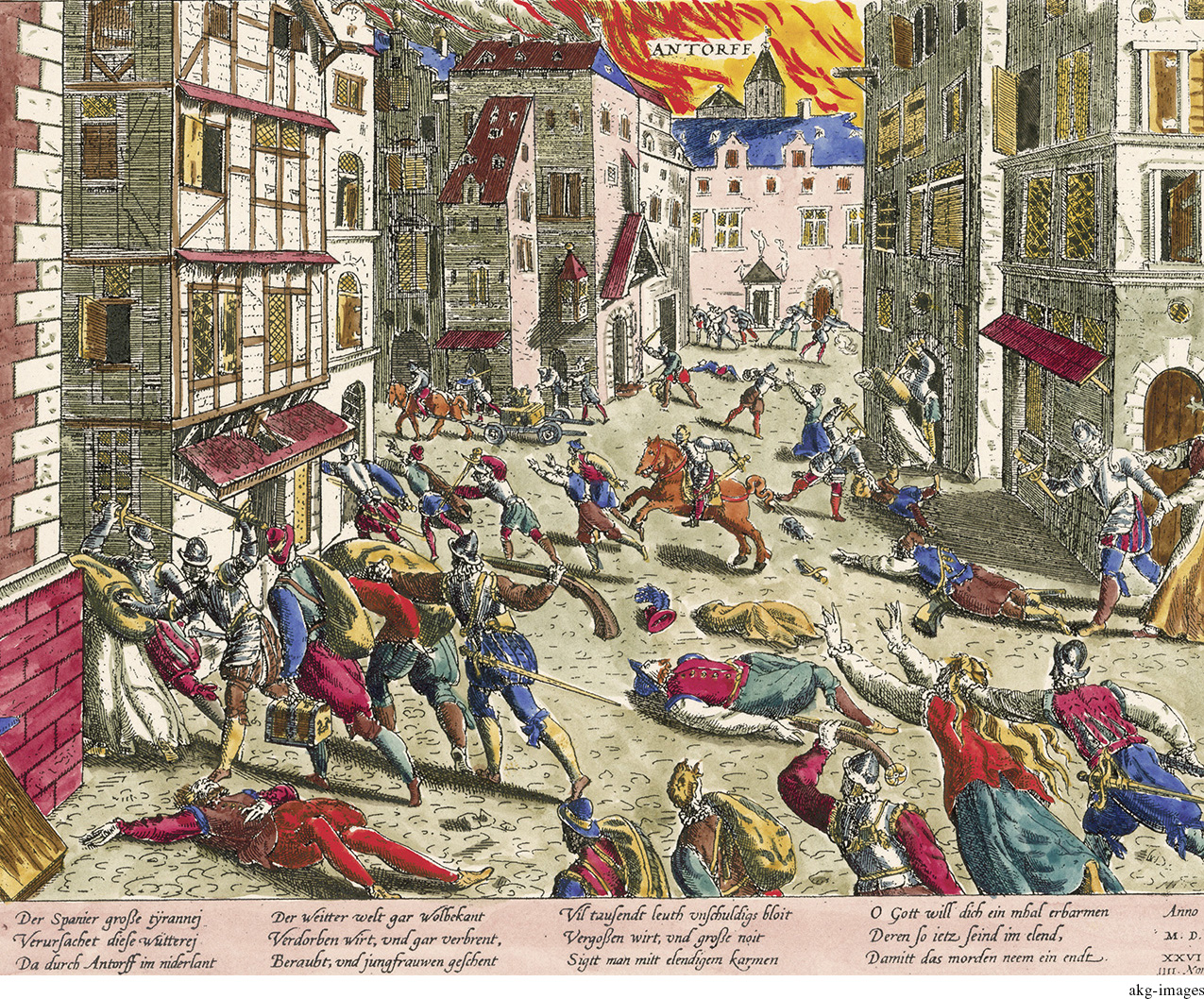Introduction for Chapter 15

IN NOVEMBER 1576, SPAIN’S SOLDIERS sacked Antwerp, Europe’s wealthiest city. In eleven days of horror known as the Spanish Fury, the troops slaughtered seven to eight thousand people and burned down a thousand buildings, including the city hall. The king of Spain had sent an army of ten thousand men in 1566 to occupy his rebellious northern domains and punish Calvinists, who had smashed stained-glass windows and statues in Catholic churches. By 1575, however, the king had run out of funds, and his men rioted after being unpaid for months. The Spanish Fury was far from an isolated incident in this time of religious upheaval. It showed, moreover, that violence often exploded from a dangerous mixture of religious, political, and economic motives.
The first two generations of battles over the Protestant Reformation had ended with the Peace of Augsburg in 1555. That agreement helped maintain a relative calm in the lands of the Holy Roman Empire, but in western Europe religious strife multiplied after 1560 as Calvinists made inroads in France, the Netherlands, and England. In 1618, fighting broke out again in the Holy Roman Empire—and before it ended in 1648, the Thirty Years’ War involved most of the European powers and desolated lands and peoples across central Europe. All in all, nearly constant warfare marked the century between 1560 and 1648. Like the Spanish Fury, these struggles began as religious disputes but soon revealed other motives: political ambitions, long-standing rivalries between the leading powers, and greed—all of which raised the stakes of conflict.
CHAPTER FOCUS What were the long-term political, economic, and intellectual consequences of the conflicts over religious belief in this era?
Suffering only increased when a major economic downturn in the early seventeenth century led to food shortages, famine, and disease in much of Europe. These catastrophes hit especially hard in the central European lands devastated by the fighting of the Thirty Years’ War. In intellectual life a new understanding of the motion of the planets in the heavens and of mechanics on earth developed among experimenters in “natural philosophy,” that is, what came to be called science. This scientific revolution ultimately reshaped Western attitudes in virtually every field of knowledge, but at its beginnings it still had to compete with traditional religious views and popular beliefs in magic and witchcraft.